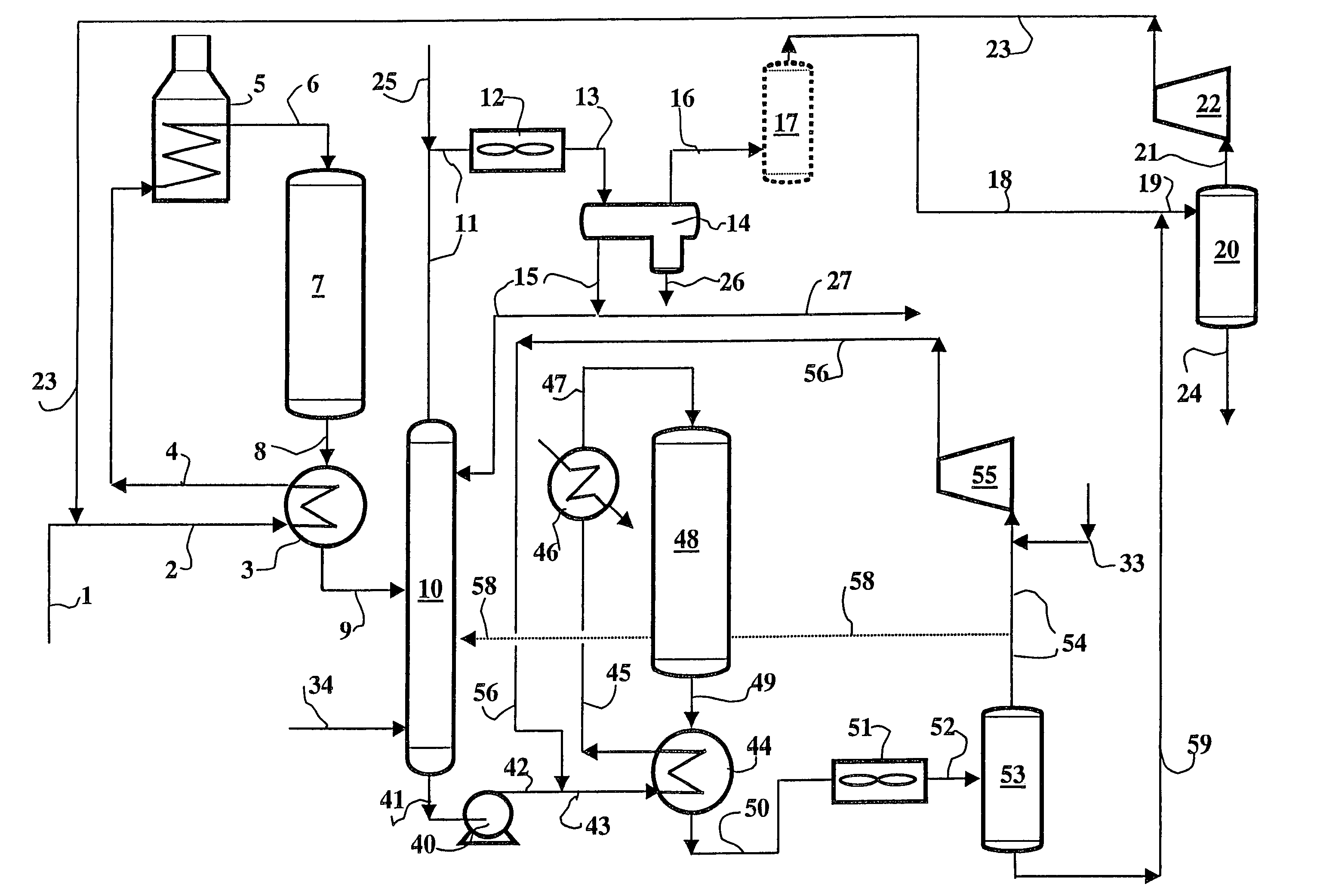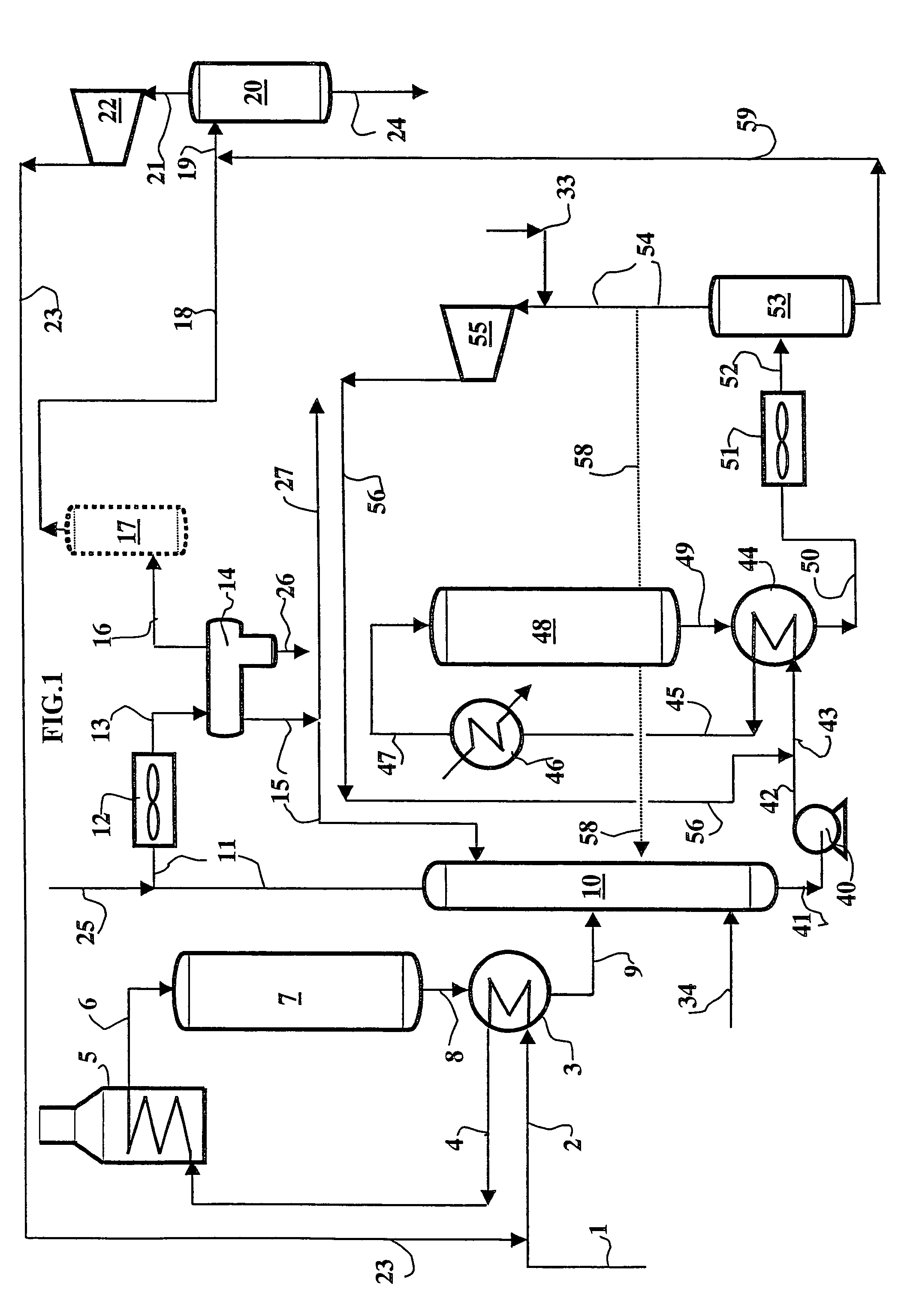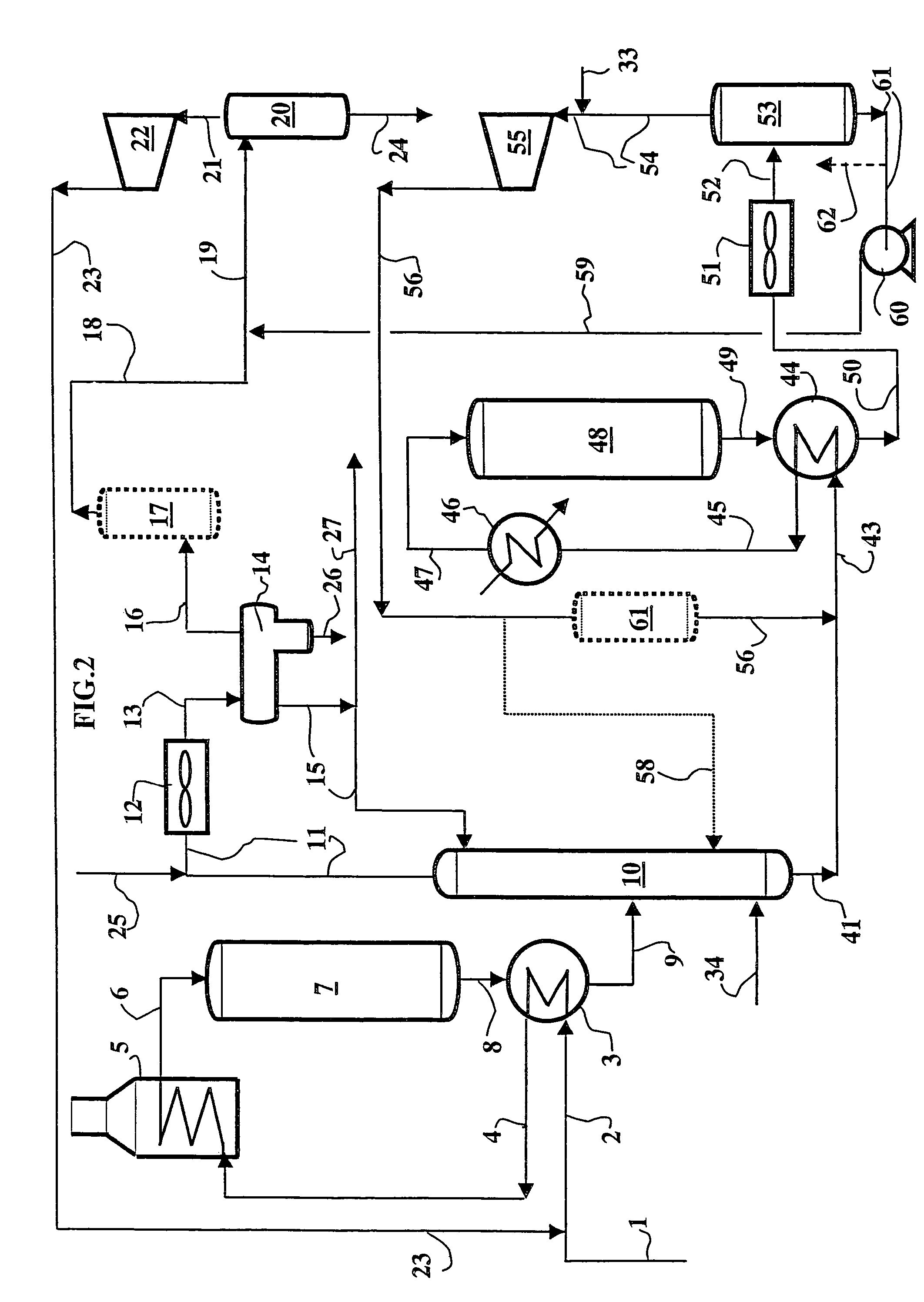Two-step method for middle distillate hydrotreatment comprising two hydrogen recycling loops
a technology of hydrogen recycling loop and distillate, which is applied in the direction of liquid organic insulation, aromatic hydrocarbon hydrogenation, fuels, etc., can solve the problems of inefficient energy efficiency, more expensive and sensitive to impurities, and inability to meet the needs of us
- Summary
- Abstract
- Description
- Claims
- Application Information
AI Technical Summary
Benefits of technology
Problems solved by technology
Method used
Image
Examples
example 1
[0195]Feed treated: light cycle oil (LCO) with the following characteristics:[0196]distillation interval (5%-95% distilled): 205-347° C.;[0197]density: 0.91;[0198]sulphur content: 4000 ppm;[0199]nitrogen content: 800 ppm;[0200]aromatics content: 60% by weight;[0201]cetane index: 28;[0202]purity of makeup hydrogen: 92.5.
[0203]Operating Conditions in First Step a1) and First Loop REC1:[0204]catalyst: HR448, Co—Mo on alumina, sold by AXENS (formerly PROCATALYSE);[0205]mean reactor temperature: 380° C.;[0206]reactor outlet pressure: 9.8 MPa;[0207]H2 partial pressure, reactor outlet: 6.2 MPa;[0208]HSV (hourly space velocity): 0.6 h−1;[0209]hydrogen (reactor inlet+quench): 625 Nm3 / m3 of feed;[0210]hydrogen consumed in step a1): 2.03% by weight with respect to feed;
[0211]Operating Conditions in Step a2):[0212]stripping column inlet temperature: 220° C.;[0213]stripping column inlet pressure: 9.5 MPa;[0214]number of theoretical plates above supply: 9;[0215]number of theoretical plates below ...
example 2
[0239]Feed: identical to that of Example 1.
[0240]The facility was designed to obtain the same quality of feed after the first step and the same final product as in the facility of Example 1. This facility also carried out stripping with column bottom recovery of about 99% by weight of the fraction boiling above 150° C., and also functioned in accordance with the first variation of the process of the invention.[0241]Purity of makeup hydrogen: 99.999.
[0242]Operating Conditions in First Step a1) and First Loop REC1:[0243]catalyst: HR448, Ni—Mo on alumina, sold by AXENS (formerly PROCATALYSE);[0244]mean reactor temperature: 380° C.;[0245]reactor outlet pressure: 7.3 MPa;[0246]H2 partial pressure, reactor outlet: 5.8 MPa;[0247]HSV (hourly space velocity): 0.55 h−1;[0248]hydrogen (inlet+quench): 625 Nm3 / m3 of feed;[0249]hydrogen consumed in step a1): 2.03% by weight with respect to feed;
[0250]Operating Conditions in Step a2):[0251]stripping column inlet temperature: 220° C.;[0252]strippin...
PUM
| Property | Measurement | Unit |
|---|---|---|
| pressure | aaaaa | aaaaa |
| pressure | aaaaa | aaaaa |
| pressure | aaaaa | aaaaa |
Abstract
Description
Claims
Application Information
 Login to View More
Login to View More - R&D
- Intellectual Property
- Life Sciences
- Materials
- Tech Scout
- Unparalleled Data Quality
- Higher Quality Content
- 60% Fewer Hallucinations
Browse by: Latest US Patents, China's latest patents, Technical Efficacy Thesaurus, Application Domain, Technology Topic, Popular Technical Reports.
© 2025 PatSnap. All rights reserved.Legal|Privacy policy|Modern Slavery Act Transparency Statement|Sitemap|About US| Contact US: help@patsnap.com



